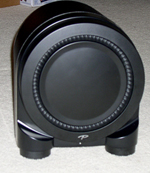May I know in any of your prior tests, did it involves artificial low sub bass in the 30hz?
See the description of the files: https://www.audiosciencereview.com/...tereo-bass-using-subwoofers.11034/post-928692
The files are all filter at 48db sloop at 80hz. The main tones are artificial bass in 32 to 34hz. The files are difference of intensity between left and right of 20db, 10db, and 3db.
It was tested in big room (5000+ cubic ft) that opens to the rest of the house with subs eq to deal with room modes. So it is not a typical closed room and not your typical non eq subs. More details here:

Stereo Bass using subwoofers
Hmm, this particular one is about difference in 32 to 34 Hz. If I turn off ARC, then right subs will have significant dB peak due to room mode, and left sub will have significant null due to room mode. The difference, based on the measurements, should be in the +10db range. This +10db imbalance...www.audiosciencereview.com
I am pretty sure that none of your tests involved such 30hz artificial sub bass tones with such big db difference between left and right channels. I really hope you can perform tests with such files with a stereo subs yourself, and then come back to let us know about your own observations.
Test files available here:
Traust - Google Drive
drive.google.com
Start with files 9 and 10. If you cannot sense a different, no point going further.
I have not had my system on in a week except to watch news or a ball game whilst practicing, too busy at work.
The tests IIRC (it was a long time ago) used single and swept tones from 5 Hz to 250 Hz as well as pink noise and some demo tracks (like the old Sheffield Drum Tracks, an MF organ recording I have forgotten, a few others). The focus was less on stereo effects than localizing low frequencies particularly in-room. It was hard even back then finding recordings with stereo bass, and multichannel did not exist for all practical purposes (we did have the old Pink Floyd Quadraphonic album).
Obviously, or maybe not, if you place two subs widely apart in a field you can begin to localize very LF tones, though it was harder than we thought. I found an article back then talking about determining storm direction from thunder that was interesting, wish I had it and/or remembered more. All I recall is that the directional information was basically from the sharper "crack", and the rumbles were more difficult if not impossible to localize, but general direction could be determined from a distance.
The only thing I know for certain is that my opinion and my old essentially un-documented test results aren't going to mean anything to anybody. I'll try to ignore this thread.
Last edited:

